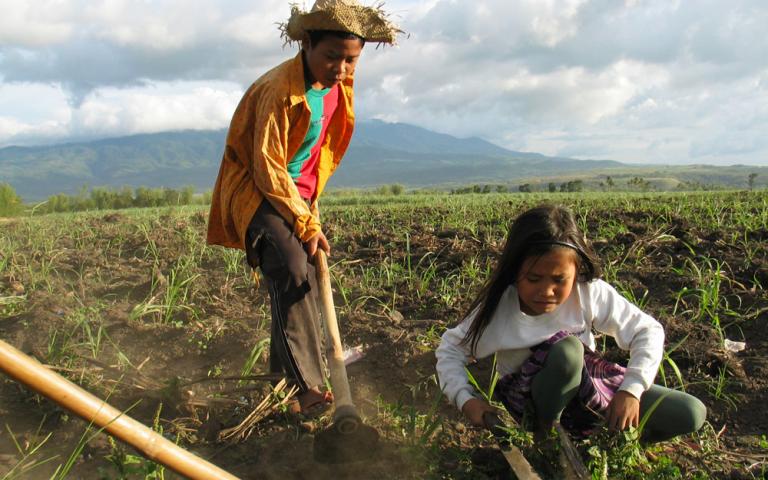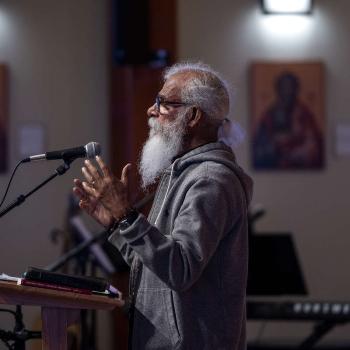WILLS POINT, TX – Gospel for Asia (GFA) Special Report on forced child labor today: Millions of Children Trapped between Extreme Poverty and the Profits of Others
New Developments to End Forced Child Labor
Supply Chain Enforcement
If this special report accomplishes nothing else, even though it is just the tip of the proverbial iceberg, it should make readers aware that every effort to eradicate child labor has failed. That is substantially the reason for the title being “Child Labor: Not Gone but Forgotten.”
Despite consistent failures, new proposals continue to be set forth. The two most recent propose supply chain management solutions.
A number of countries that are major importers, including the United States, have launched campaigns that place the onus on prohibiting the importation of products that have been produced using child labor and all forms of forced labor or debt bondage. The U.S. program is operated under the auspices of the U.S. Immigration and Customs Enforcement (ICE) Homeland Security Investigations (HSI) Forced Labor Program.
The results of the program thus far indicate that in FY 2017, ICE:
- Spent $12,682,597 investigating cases of international forced child labor.
- Spent $16,660,000 investigating cases of domestic forced child labor.
- Made 150 domestic and 66 international arrests related to forced child labor.
- Obtained 120 domestic and two international indictments related to forced child labor.
- Obtained 73 domestic and no international convictions related to forced child labor.
- Seized a total of $626,327 in assets from domestic and international investigations on forced child labor.
You do the math. Is there any better way to spend nearly $30 million to aid the cause of child labor?
Blockchain Enforcement
In an effort to combat forced labor, major corporations, including IBM, Ford and Coca Cola, are advocating the use of the current poster child of rapidly evolving technology: blockchain. It is a potentially effective means of ensuring that the products they market do not include child labor or any kind of forced labor from the beginning to the end of the entire supply chain process.
Blockchain proposes to be a secure and accurate digital ledger for recording assets, how and where they were obtained, and by whom.
Theoretically, companies would refuse to purchase from suppliers at any point in the supply chain who use child labor. All assets, locations and employees would be required to be “tagged” so they could be identified as a legitimate part of the supply chain. Miners like Lukasa and indentured fishermen like James Kofi Annan would not be able to work because they would not be registered in the blockchain.
Products sourced from conflict zones or that were created using child labor would not be able to enter the global market.

What Can We Do About Child Labor?
The answer to that question will depend upon who answers it. Well-meaning individuals from the philosophical to the practical will take positions on both sides of the argument of whether or not the practice of child labor can be eradicated. Even the philosophical and the practical will be divided in their opinions.
One thing we do know is that nothing has succeeded thus far. That does not bode well for future success.
But this report does not propose the eradication of child labor. Rather, it is intended to draw readers’ attention to its continuing existence. The issue of child labor is a Gordian Knot, the size of which cannot be cut even with the sword of Alexander the Great.
The problem of child labor is inexorably linked to the poverty that enslaves nearly half the world’s entire population. We must take God at His Word; Jesus reminded His disciples that there will always be people living in poverty (see John 12:8). When Jesus referred to the poor, He used a word that specifically describes people who are destitute, helpless and powerless.
Three billion people in the world live on less than the equivalent of $2.50 USD per day. More than 84 percent of those living in Sub-Saharan Africa live on less than $5.50 per day.
3 billion
people live on less than $2.50 USD per day
While various and sundry organizations and institutions attempt to solve the child labor problem, the church’s task remains what it has always been: Be the hands and feet of Jesus to “the least of these” (see Matthew 25:40).
The Lord never called us to eradicate either child labor or poverty. He will do that someday when He returns to earth to rule and reign. In the meantime, we are called to serve.
Ours is not a race to eradicate child labor. It is a journey to provide and care for those who are relegated to the lowest positions in life. Relentlessly ministering to the needs of “the least of these” is visible evidence of the love and grace of God in action.

God’s Grace in Action at Gospel for Asia
For 40 years, the singular focus of Gospel for Asia (GFA) has been “to take the love of Christ to people who have never heard His name before.”
We must understand that Jesus looked upon people with such compassion that He made the lame to walk again and caused the blind to see. He didn’t just tell them that He loved them; He demonstrated His love in ways that changed their lives.
Representing Christ on earth requires that we demonstrate the same love and compassion that He did while He was here.
We are, from a heavenly perspective, blessed to be able to feed the hungry, tend to the sick and give a cup of cold water to the thirsty in Jesus’ name. These are people who know they have great needs. The Lord has granted us the high honor to love them and to serve them as His representatives. As He came to us as the “express image” of God the Father, so should we reach out to others in the express image of Jesus Christ (see Hebrews 1:3).
Poverty Alleviation
Poverty, as we have shown, is at the root of the child labor problem. Regardless of any other peripheral factors, poverty is always the driving force behind either willing or forced child labor. Therefore, much of Gospel for Asia’s work among the people of South Asia is related to rescuing families from the clutches of poverty.
Literacy and Vocational Education
The inability to read and write is a major hindrance that, unless addressed, becomes a generational curse. Illiterate people lack essential tools needed to rise above a subsistence-level existence. Furthermore, illiteracy leaves people in a position where others can easily take advantage of their situation, including entrapping them and their children in bonded labor.
Gospel for Asia’s field partners host literacy classes and vocational training classes for adults and youth, equipping them with skills that can break them out of the cycle of poverty. Gospel for Asia (GFA)-supported workers guide class members through an understanding of basic entrepreneurial skills to empower them to create a better future for themselves. In addition, gifts such as sewing machines, fishing nets and rickshaws are just a few of the income-generating resources distributed among families who are in dire need of an income.
Farm Animals
Gospel for Asia (GFA) sponsors around the world give generously to provide farm animals for families in rural Asian villages. Chickens, goats, and cattle produce products like eggs, milk and meat, which can be sold for a good price or used to feed the family. Breeding the animals also allows the owners to expand their businesses, continually increasing their incomes to better serve their families.
Jesus Wells
Clean water is taken for granted by Westerners. However, in Africa and South Asia, women and children spend hours fetching water —not from a faucet, but from a ground source several hours away. In some cases, they must make the journey multiple times each day in order to meet their family’s needs.
By installing and maintaining Jesus Wells within poverty-stricken villages and communities, Gospel for Asia (GFA) provides a source of free clean water that can supply as many as 300 people with clean water for up to 20 years.
Not only do these people now have clean water, but it is also readily accessible. The women who fetched the water gain up to six hours a day that can now be used to obtain literacy and vocational training or to tend to their homes and children.
Bridge of Hope Centers
Enrollment in Gospel for Asia (GFA)-supported Bridge of Hope centers is offered freely to children whose parents commit to keeping their children in school. The Bridge of Hope Program is a continuation of the school day, in which the children received enhanced and advanced training.
GFA’s Bridge of Hope Program provides backpacks and school supplies, relieving students’ parents of the pressure of those expenses. Children also receive a nutritious meal each day and free health checkups. As they experience holistic growth through the program, students gain a vision for a life away from the cheap labor in brick kilns and factories—and they are equipped to fulfill that vision.
God’s Grace in Action Through You
None of Gospel for Asia’s efforts to free families from poverty and their children from child labor would be possible without people like you. The prayers and financial support of Gospel for Asia (GFA) friends drill wells; open Bridge of Hope centers; pay for literacy classes, vocational training and farm animals; and equip all of the ministries of national missionaries who are sharing Christ’s love through practical ways that change lives both now and for eternity.
We may never end child labor, but we must never forget it or those working to combat it—and we must remain relentless in being the only Jesus some will ever see.
Child Labor: Not Gone, but Forgotten: Part 1 | Part 2
Source: Gospel for Asia Special Report, Child Labor: Not Gone, but Forgotten
Learn more about the children who find themselves discarded, orphaned and abused, and the home and hope that they can be given through agencies like Gospel for Asia.
Click here, to read more blogs on Patheos from Gospel for Asia.
Learn more about Gospel for Asia: Facebook | YouTube | Instagram | Sourcewatch | Integrity | Lawsuit Update | 5 Distinctives | 6 Remarkable Facts | Media Room | Poverty Solutions | Endorsements | 40th Anniversary | Lawsuit Response |













